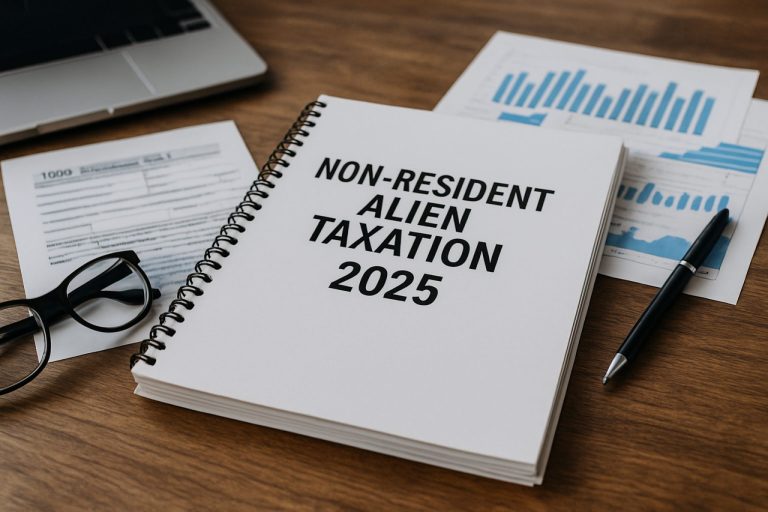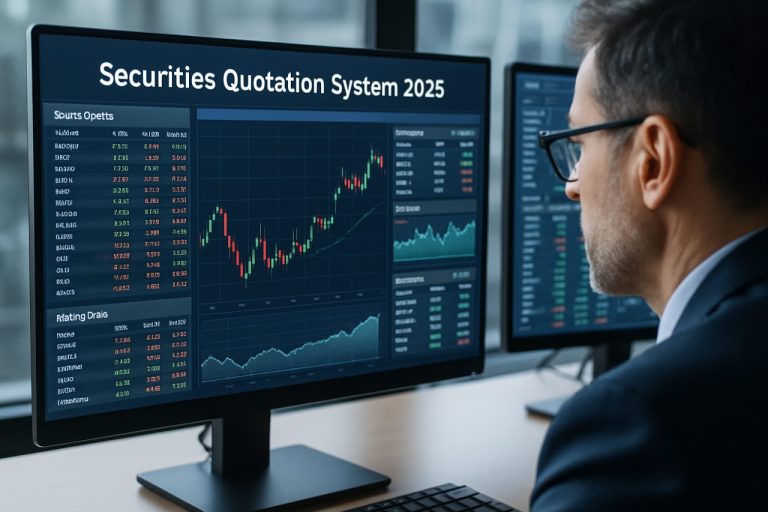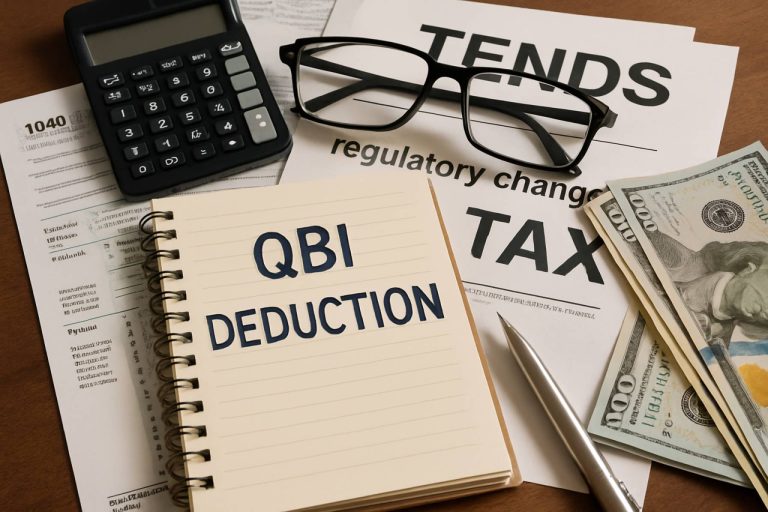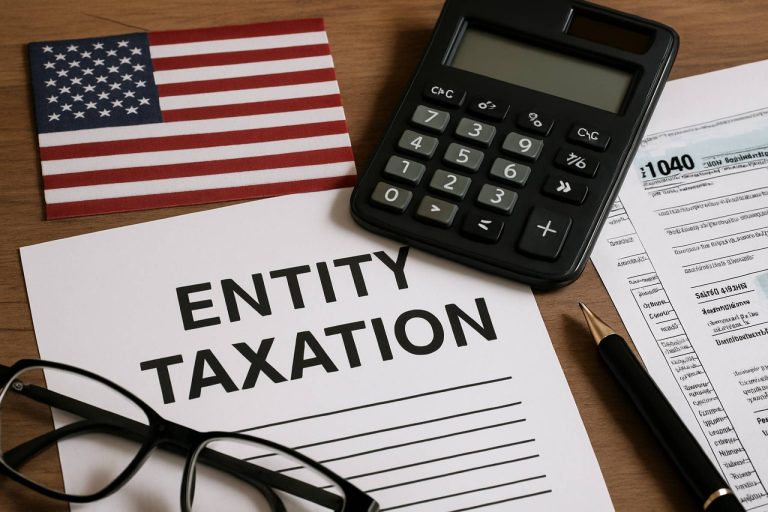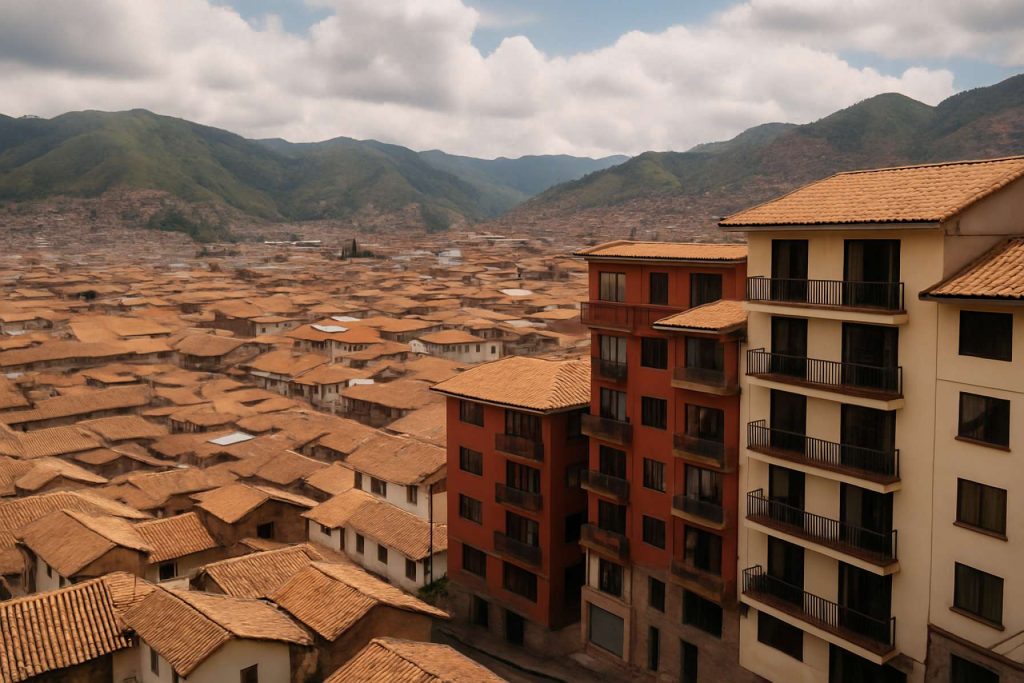
Table of Contents
- Executive Summary: Key Takeaways for 2025 and Beyond
- Market Overview: Rental Demand, Supply, and Vacancy Rates
- Urban vs. Rural: Regional Dynamics Shaping Peru’s Rental Sector
- Key Statistics: Prices, Yields, and Occupancy Trends in 2025
- Legal & Tax Framework: Landlord-Tenant Laws and Compliance (Referencing peru.gob.pe & sunat.gob.pe)
- Impact of Recent and Upcoming Regulation Changes
- Foreign Investment & Ownership: Rules and Restrictions
- Technology and Innovation in Peru’s Rental Market
- Risks and Challenges: Economic, Political, and Environmental Factors
- Future Outlook: Projections for 2026–2030 and Strategic Opportunities
- Sources & References
Executive Summary: Key Takeaways for 2025 and Beyond
The rental market in Peru is undergoing significant transformation as the country navigates post-pandemic economic recovery and adapts to evolving demographic and urbanization trends. In 2025, the sector is characterized by increased demand, regulatory shifts, and a growing focus on formalization and tenant protections.
- Market Dynamics: The demand for rental properties, especially in Lima and other major urban centers, continues to rise, driven by internal migration, young professionals delaying home purchase, and ongoing urbanization. According to the National Institute of Statistics and Informatics (INEI), approximately 22% of households in metropolitan Lima were renting as of 2023, a figure projected to increase incrementally through 2025.
- Legal Framework and Reforms: The Peruvian rental market operates primarily under the Civil Code. However, recent years have seen important regulatory interventions aimed at balancing landlord-tenant relations and encouraging the formalization of rental contracts. Notably, the National Superintendency of Public Registries (SUNARP) has streamlined property registration processes, while the Ministry of Justice and Human Rights continues to promote legal education for both landlords and tenants.
- Compliance and Enforcement: Compliance challenges persist, particularly regarding informal rental agreements and tax reporting. The National Superintendency of Customs and Tax Administration (SUNAT) has increased oversight of rental income declarations, reinforcing the requirement for landlords to formally register leases and pay corresponding taxes, as outlined in the Ley del Impuesto a la Renta.
- Key Statistics: Rents in Lima rose by approximately 6% year-over-year in 2024, with vacancy rates remaining low in prime districts. The government estimates that informal rentals still represent over 40% of the market, highlighting ongoing challenges in formalization (INEI).
- Outlook for 2025 and Beyond: The rental market is expected to remain robust, with gradual expansion into secondary cities. Future legislative efforts may further incentivize formalization, enhance dispute resolution mechanisms, and introduce more standardized lease agreements. Continued urban growth, economic stabilization, and regulatory tightening are likely to shape the sector’s trajectory over the next several years.
Market Overview: Rental Demand, Supply, and Vacancy Rates
The rental market in Peru continues to experience dynamic shifts as the country enters 2025, shaped by macroeconomic trends, regulatory reforms, and demographic changes. In metropolitan Lima—home to nearly one-third of the national population—demand for rental housing has remained robust, driven by urbanization, youth mobility, and limited housing affordability. According to information from the Instituto Nacional de Estadística e Informática (INEI), the urban rental segment accounts for approximately 15% of total households nationwide, with a higher concentration in Lima and Arequipa.
Rental demand has been further bolstered by Peru’s ongoing migration trends, both internal (from rural to urban areas) and external (particularly Venezuelan migrants). INEI data indicate that the population in Lima and Callao increased by more than 2% in 2023–2024, supporting a sustained need for rental accommodation. Young professionals and students, who typically lack access to mortgage financing, constitute a growing share of tenants.
On the supply side, the rental housing stock has expanded modestly, but not at a pace sufficient to match demand. The Fondo MIVIVIENDA—Peru’s state housing agency—has promoted initiatives such as the “Renta Joven” program, which offers rental subsidies to individuals aged 18–40, aiming to stimulate formal rental supply and ease affordability constraints. However, the formal market remains outpaced by informal rentals, where compliance with safety and tenancy standards is often limited.
Vacancy rates in the formal sector have remained low, especially in Lima’s central districts (Miraflores, San Isidro, Surco), where rates hovered between 4–6% in late 2024, as reported by the Superintendencia Nacional de los Registros Públicos (SUNARP). Peripheral districts and secondary cities show slightly higher vacancies, reflecting slower economic recovery and lower purchasing power.
Looking ahead, the outlook for 2025 and beyond suggests continued demand for rentals, fueled by demographic trends and ongoing challenges in housing affordability. While government-backed programs may incrementally boost formal supply, persistent informality and limited development of new rental stock could constrain vacancy rates and put upward pressure on rents, particularly in high-demand urban centers.
Urban vs. Rural: Regional Dynamics Shaping Peru’s Rental Sector
The rental market in Peru continues to exhibit marked contrasts between urban and rural regions, shaped by demographic trends, infrastructure disparities, and evolving legal frameworks. As of 2025, urban centers—particularly Lima, Arequipa, and Trujillo—drive the bulk of rental activity, reflecting ongoing migration, urbanization, and concentrated employment opportunities.
According to the Instituto Nacional de Estadística e Informática (INEI), the urban population now accounts for over 79% of the national total, with Lima alone housing nearly a third of all Peruvians. This urban concentration has intensified demand for rental properties, pushing rental prices upwards and maintaining low vacancy rates in metropolitan zones. In Lima, recent data from the Superintendencia Nacional de los Registros Públicos (SUNARP) show a year-on-year increase in the registration of residential lease contracts, reflecting both sustained demand and a trend toward formalization within the sector.
Rural regions, by contrast, continue to see limited rental market development. The INEI reports that only a small fraction of rural households rent, with most occupying family-owned or inherited properties. This dynamic is attributed to lower population density, less economic diversification, and a cultural preference for ownership. While some rural towns near mining or agro-industrial hubs have seen modest upticks in rental activity, the scale remains minor compared to urban centers.
Legal and compliance frameworks influencing the rental market apply nationally but are most impactful in urban settings. The Ministerio de Justicia y Derechos Humanos highlights the implementation of the 2015 Law for the Promotion of Rent Access (Ley 30201), which introduced the “Contrato de Arrendamiento con Garantía de Cumplimiento” (“Rental Contract with Performance Guarantee”). This legal instrument, designed to bolster landlord confidence and promote formalization, is predominantly utilized in cities where market risks and tenant mobility are higher.
- Urbanization is expected to persist, with the INEI projecting further migration to cities through 2030, reinforcing urban rental demand.
- Recent regulatory emphasis by the Superintendencia Nacional de Administración Tributaria (SUNAT) on rental income declaration is expected to increase compliance, especially in formal urban markets.
- Rural rental markets are likely to remain secondary, except in regions experiencing resource-driven economic booms or infrastructure investments.
In summary, the regional dynamics of Peru’s rental sector in 2025 are defined by the continued divergence between robust, regulated urban markets and the more static, informal rural context. Future sector growth and formalization efforts will concentrate on urban areas, where migration, legal compliance, and economic opportunity converge.
Key Statistics: Prices, Yields, and Occupancy Trends in 2025
The Peruvian rental market in 2025 is characterized by a dynamic interplay of urban migration, inflationary pressures, and ongoing regulatory adjustments. The capital city, Lima, continues to dominate rental activity, accounting for over 60% of formal rental contracts nationwide. According to the Banco Central de Reserva del Perú, urban housing rents in Lima showed an average annual increase of 5.2% in the first quarter of 2025, outpacing general inflation, which held at approximately 3.5%. This trend is partly attributed to persistent housing supply constraints and sustained demand from both young professionals and migrant populations relocating from provinces.
Gross rental yields in prime Lima districts such as Miraflores, San Isidro, and Barranco have stabilized between 4.5% and 5.2% in 2025, consistent with figures reported over the past two years. Secondary cities, including Arequipa and Trujillo, offer slightly higher yields, averaging 5.5% to 6%, reflecting lower entry prices and growing local economies. Data from the Superintendencia Nacional de Administración Tributaria (SUNAT) indicates a modest but steady rise in the formal registration of lease contracts, suggesting gradual formalization of the rental sector, which historically operated largely informally.
Occupancy rates remain robust in the multifamily segment, with Lima averaging 94% occupancy in professionally managed buildings, according to figures from the Fondo MIVIVIENDA S.A.. The overall residential vacancy rate in metropolitan Lima is estimated at just 4–5%, reflecting strong demand and limited new supply—especially in the affordable and mid-range segments. In contrast, high-end luxury units have seen vacancy rates rise slightly to 8%, primarily due to oversupply in select districts.
Looking ahead, the rental market outlook for 2025 and the following years is shaped by a moderate but continued increase in rental prices, supported by urbanization trends and an expanding middle class. The government’s push for formalization—through digital registration of contracts and tax incentives—aims to further increase transparency and compliance in the sector. Initiatives by Fondo MIVIVIENDA S.A. to promote rental housing projects and provide guarantees for young renters are expected to unlock new supply and maintain healthy occupancy and yield levels into 2026 and beyond.
Legal & Tax Framework: Landlord-Tenant Laws and Compliance (Referencing peru.gob.pe & sunat.gob.pe)
The legal and tax framework governing the rental market in Peru is shaped by the Civil Code, municipal regulations, and specific tax obligations overseen by national authorities. As of 2025, several statutory provisions and compliance requirements are particularly pertinent for both landlords and tenants, reflecting ongoing regulatory updates and enforcement efforts.
Legal Foundations and Recent Developments
The primary legal basis for rental agreements is established in the Peruvian Civil Code (Articles 1666–1706), which defines contractual obligations, terms of lease, deposit requirements, and grounds for eviction. In recent years, efforts have been made to streamline dispute resolution between landlords and tenants, including the expansion of the Desalojo Notarial (notarial expedited eviction) process, designed to reduce judicial backlog and enhance legal certainty in the rental sector. Landlords can now initiate a simplified eviction through a notary public in cases of non-payment or contract expiration, providing greater protection and predictability for property owners (Gobierno del Perú).
Compliance Obligations
Landlords are required to formalize rental contracts in writing, register them with the tax authority when necessary, and comply with national and municipal regulations regarding property use and tenant rights. The law mandates that security deposits not exceed one month’s rent, and both parties must adhere to mutually agreed terms within the framework of the Civil Code and any supplementary municipal ordinances (Ministerio de Vivienda, Construcción y Saneamiento).
Taxation and Reporting
Rental income is subject to taxation under the category of “First Category Income” in the Peruvian Income Tax Law. Landlords must declare rental income to the Superintendencia Nacional de Administración Tributaria (SUNAT) and pay a flat rate of 5% on gross rental receipts, without the possibility of deducting expenses. Tenants and landlords are both encouraged to ensure that contracts are registered and tax receipts (boletas de arrendamiento) are issued, as non-compliance can lead to penalties and forfeiture of legal protections.
Key Statistics and Outlook
As of early 2025, rental housing continues to account for a significant share of urban dwellings, particularly in Lima and major cities, where demand has increased due to urbanization and migration trends. The government has signaled intentions to further modernize landlord-tenant law, proposing digital contract registration and greater tax enforcement to encourage formalization. These changes are expected to improve transparency, reduce informality, and foster greater investment confidence in the Peruvian rental market in the coming years (Gobierno del Perú).
Impact of Recent and Upcoming Regulation Changes
The rental market in Peru has experienced increasing regulatory attention in recent years, with the government introducing and updating legal frameworks to address housing demand, landlord-tenant relations, and market transparency. Central to these efforts is Law No. 30933, known as the “Ley de Promoción del Arrendamiento para Vivienda”, which seeks to stimulate formal rental activity by offering tax incentives and legal assurances to landlords and tenants alike. This law, and its associated schemes such as the “Arrendamiento de Vivienda Formal”, are expected to remain pivotal in 2025, supporting formal contracts and facilitating dispute resolution through expedited procedures in designated courts (Congreso de la República del Perú).
A notable regulatory shift in 2023 was the updated Supreme Decree No. 002-2023-VIVIENDA, which introduced new requirements for registration of rental contracts and expanded eligibility for government-backed rent subsidies. These measures are designed to enhance transparency and reduce informality, a persistent issue in Peru’s urban rental sector, where informal agreements still account for an estimated 60% of activity (Ministerio de Vivienda, Construcción y Saneamiento).
Compliance has become a focal point for both property owners and real estate agents. The Superintendencia Nacional de Aduanas y de Administración Tributaria (SUNAT) has ramped up monitoring of rental income declarations, and there are ongoing campaigns to ensure landlords register contracts and pay the corresponding 5% rental income tax. Non-compliance can now trigger stricter penalties as per the updated tax code guidelines effective from January 2024 (SUNAT).
Looking ahead to 2025 and the following years, the government has signaled further regulatory refinements, particularly to address urban housing shortages and migration-driven rental demand in Lima and other major cities. Proposed amendments under review include enhanced tenant protections, simplified eviction processes for non-payment, and expanded digital platforms for rental agreement registration. The Ministry of Housing’s 2025–2027 strategic plan prioritizes digitalization and aims to reduce informality in the rental sector by 20% within three years (Ministerio de Vivienda, Construcción y Saneamiento).
- Key statistics: Lima’s rental market grew by approximately 18% in 2023–2024, with average rental yields around 5.2% (official government estimates).
- Compliance: Increased contract formalization and tax reporting, with SUNAT audits targeting high-value urban rentals.
- Outlook: Continued regulatory tightening, digitalization, and targeted subsidies are expected to shape the rental landscape, with a focus on reducing informality and protecting both landlords and tenants.
Foreign Investment & Ownership: Rules and Restrictions
The Peruvian rental market in 2025 remains a significant sector for both domestic and foreign investors, largely due to Peru’s open stance on property ownership and rental activities. There are no express constitutional or statutory restrictions preventing foreign individuals or companies from acquiring real estate for rental purposes, except for specific prohibitions on properties located within 50 kilometers of Peru’s borders for national security reasons (Superintendencia Nacional de los Registros Públicos (SUNARP)). This means that, in urban and most rural areas, foreigners enjoy the same legal rights as Peruvians to own and lease property.
The principal legal framework governing property and rentals is set out in the Peruvian Civil Code. Lease agreements (contratos de arrendamiento) can be freely negotiated between parties and registered at the local Public Registry (Ministerio de Justicia y Derechos Humanos). There is no legal requirement for government approval for foreigners to lease out residential or commercial properties, provided compliance with the general rules and local zoning laws.
In 2025, compliance with tax obligations has become more stringent, with the Superintendencia Nacional de Administración Tributaria (SUNAT) intensifying its oversight of rental income reporting. Landlords, regardless of nationality, must register rental contracts and declare rental income, which is subject to a 5% income tax for individuals. Non-resident landlords are also subject to this tax regime, and mechanisms for withholding at source by tenants or property managers have been reinforced. Non-compliance can result in fines and possible tenancy disputes.
Key statistics from SUNAT and SUNARP indicate that, as of early 2025, foreign ownership of rental properties in Lima and other major cities continues to grow, with foreign investors representing an estimated 8–10% of new registrations in the residential rental sector. The overall rental market remains robust, driven by ongoing urbanization and demand for both short- and long-term rentals.
Looking ahead, the outlook for foreign investment in Peru’s rental market is stable. While the government has signaled interest in further digitalizing property registration and strengthening tenant protections, no major changes to foreign ownership or rental rules are anticipated over the next few years (Ministerio de Economía y Finanzas). This legal certainty, combined with Peru’s growing urban housing demand, suggests continued opportunities for foreign investors seeking exposure to the Peruvian rental market.
Technology and Innovation in Peru’s Rental Market
The rental market in Peru is undergoing significant transformation in 2025, driven by technological innovation and digitalization. The emergence of online platforms has streamlined property listings, tenant screening, and contract management, enhancing transparency and efficiency for both landlords and tenants. Government initiatives to foster digital transformation in real estate are also shaping the sector’s evolution.
One of the most notable trends is the widespread adoption of digital platforms for property management and rental transactions. Major Peruvian cities, particularly Lima, have seen a surge in online rental marketplaces, which facilitate the matching process between landlords and prospective tenants. These platforms often integrate electronic payment systems and offer digital contract signing, reducing paperwork and improving transaction security. The Ministry of Foreign Trade and Tourism and the Presidency of the Council of Ministers have supported digitalization initiatives, encouraging the use of online government services and electronic signatures, which are increasingly accepted in lease agreements.
Legal frameworks have adapted to support these technological advancements. The Peruvian Civil Code, which governs lease contracts, now recognizes electronic contracts as legally binding, provided they comply with requirements set out by the Supervisory Agency for Private Investment in Telecommunications (OSIPTEL) and the Presidency of the Council of Ministers regarding digital signatures and data protection. Landlords and property managers are required to adhere to data privacy standards outlined in Law No. 29733, the Personal Data Protection Law, ensuring the secure handling of tenant information.
- Key statistics from 2024 indicate that over 60% of urban rental listings were initiated online, a figure projected to rise steadily through 2026 as digital literacy and internet penetration increase, according to the National Institute of Statistics and Informatics (INEI).
- Compliance with digital contract standards and privacy regulations is monitored by the National Authority for the Protection of Personal Data, which has intensified oversight of digital rental platforms to safeguard consumer rights.
Looking ahead, the rental market in Peru is expected to further embrace proptech innovations such as automated rent collection, virtual property tours, and AI-driven tenant screening. These advances promise to reduce administrative costs and improve market accessibility. However, authorities will continue to prioritize regulatory compliance and personal data protection as digitalization accelerates. The outlook for 2025 and beyond suggests a more efficient, transparent, and secure rental sector, shaped by ongoing investment in technology and evolving legal standards.
Risks and Challenges: Economic, Political, and Environmental Factors
The rental market in Peru faces multiple risks and challenges in 2025, shaped by a combination of economic, political, and environmental factors. These dynamics influence the stability, compliance obligations, and long-term outlook for landlords, tenants, and investors.
- Economic Volatility: The Peruvian economy demonstrated moderate growth projections for 2024 and 2025, but remains exposed to external shocks, especially from fluctuations in commodity prices and global interest rates. Inflation, although easing from pandemic-era highs, still affects real incomes and rental affordability. The Banco Central de Reserva del Perú reported inflation stabilizing near the 2% target, yet high interest rates continue to impact credit costs, slowing new rental property developments and limiting tenant purchasing power, which can dampen demand in the rental sector.
- Political Instability: Peru has experienced frequent changes in government and political unrest in recent years, leading to policy uncertainty. Such instability can delay or complicate regulatory reforms intended to modernize the housing and rental markets. For instance, the implementation of the 2022 Law for the Promotion of Rental Housing (Ley de Promoción del Arrendamiento para Vivienda) remains uneven, as shifts in political priorities can affect enforcement and incentives for formalizing rental agreements (Congreso de la República del Perú). Investors and landlords must therefore monitor legislative changes closely to ensure compliance and anticipate potential disruptions.
- Regulatory Compliance and Legal Risks: New regulations require formal registration of rental contracts and compliance with tax obligations. The Superintendencia Nacional de Administración Tributaria (SUNAT) continues to intensify efforts to reduce informality in the real estate sector, increasing audits and penalties for unreported rental income. This creates compliance challenges for landlords accustomed to informal agreements, as well as increased administrative burdens for property managers.
- Environmental Risks: Peru is highly susceptible to natural disasters such as earthquakes and flooding, which can damage rental properties and disrupt housing markets. The Instituto Nacional de Defensa Civil (INDECI) regularly updates risk maps and disaster preparedness guidelines, but the resilience of existing rental stock remains uneven, especially in informal settlements and older buildings. This exposes both landlords and tenants to sudden losses and underscores the need for robust insurance and disaster risk management strategies.
Looking ahead, the rental market’s resilience will depend on macroeconomic stability, regulatory clarity, and the sector’s ability to adapt to environmental threats. Stakeholders must stay informed of policy changes and invest in risk mitigation to safeguard assets and ensure compliance.
Future Outlook: Projections for 2026–2030 and Strategic Opportunities
The rental market in Peru is poised for significant transformation during 2026–2030, driven by demographic change, regulatory reforms, and evolving urbanization patterns. As of 2025, approximately 30% of Peruvian households reside in rented accommodation, with Lima exhibiting the highest concentration of rental demand. The continued influx of young professionals and internal migrants into urban centers is expected to bolster the rental sector, particularly in metropolitan areas such as Lima, Arequipa, and Trujillo.
Legislatively, the Peruvian government has recently modernized its rental framework. The Ministerio de Vivienda, Construcción y Saneamiento introduced the Ley de Arrendamiento de Vivienda (Law No. 30933), which promotes formal leases and provides mechanisms for dispute resolution and eviction in cases of non-payment. This law is expected to enhance legal certainty for landlords and tenants alike, fostering increased investment in rental properties. Compliance efforts are further supported by the Superintendencia Nacional de Administración Tributaria (SUNAT), which has strengthened enforcement of income declaration from rentals, aiming to reduce informality in the sector.
Looking ahead, housing affordability remains a central concern. The government’s subsidized leasing programs, such as Renta Joven and Bono de Arrendamiento, are slated for expansion, targeting low- and middle-income segments to improve access to formal rental housing (Ministerio de Vivienda, Construcción y Saneamiento). These initiatives are anticipated to stimulate demand and encourage private sector participation in residential rental development.
Key strategic opportunities for investors and developers include:
- Development of multi-family rental complexes in urban corridors, responding to the projected annual urban population growth of 1.4% (Instituto Nacional de Estadística e Informática).
- Utilizing digital platforms for property management, leasing, and compliance documentation, in line with the digital transformation agenda promoted by the Presidencia del Consejo de Ministros.
- Adapting to sustainability standards, as environmental regulations for new buildings are expected to tighten, particularly in Lima’s metropolitan area.
In summary, the Peruvian rental market between 2026 and 2030 will likely experience growth in formalization, investment, and professionalization. Stakeholders who align with regulatory trends and leverage technological and demographic shifts are positioned to benefit from emerging opportunities in this evolving landscape.
